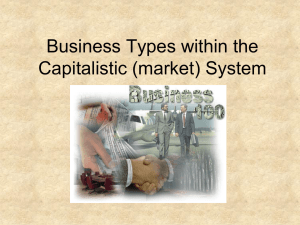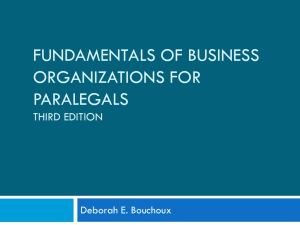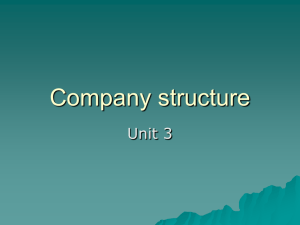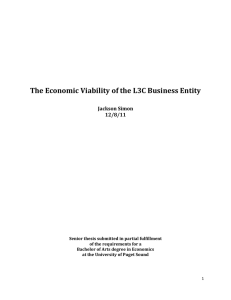Low-Profit Limited Liability Corporations: Limitless Innovation with Limited Liability
advertisement
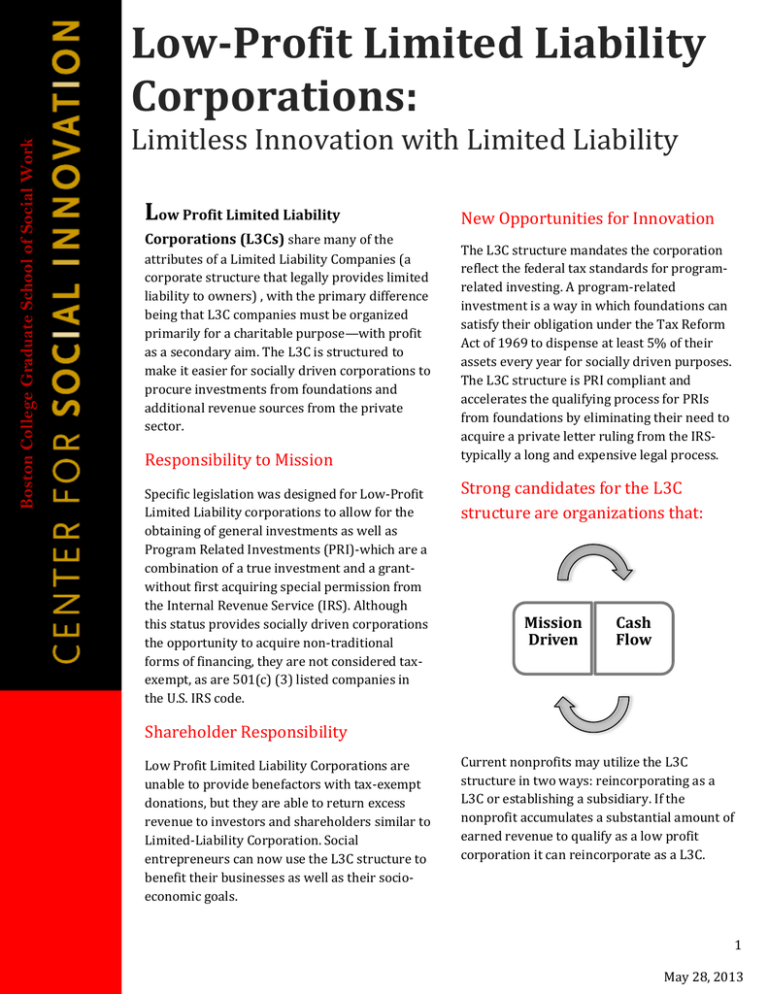
Boston College Graduate School of Social Work Low-Profit Limited Liability Corporations: Limitless Innovation with Limited Liability Low Profit Limited Liability Corporations (L3Cs) share many of the attributes of a Limited Liability Companies (a corporate structure that legally provides limited liability to owners) , with the primary difference being that L3C companies must be organized primarily for a charitable purpose—with profit as a secondary aim. The L3C is structured to make it easier for socially driven corporations to procure investments from foundations and additional revenue sources from the private sector. Responsibility to Mission Specific legislation was designed for Low-Profit Limited Liability corporations to allow for the obtaining of general investments as well as Program Related Investments (PRI)-which are a combination of a true investment and a grantwithout first acquiring special permission from the Internal Revenue Service (IRS). Although this status provides socially driven corporations the opportunity to acquire non-traditional forms of financing, they are not considered taxexempt, as are 501(c) (3) listed companies in the U.S. IRS code. New Opportunities for Innovation The L3C structure mandates the corporation reflect the federal tax standards for programrelated investing. A program-related investment is a way in which foundations can satisfy their obligation under the Tax Reform Act of 1969 to dispense at least 5% of their assets every year for socially driven purposes. The L3C structure is PRI compliant and accelerates the qualifying process for PRIs from foundations by eliminating their need to acquire a private letter ruling from the IRStypically a long and expensive legal process. Strong candidates for the L3C structure are organizations that: Mission Driven Cash Flow Shareholder Responsibility Low Profit Limited Liability Corporations are unable to provide benefactors with tax-exempt donations, but they are able to return excess revenue to investors and shareholders similar to Limited-Liability Corporation. Social entrepreneurs can now use the L3C structure to benefit their businesses as well as their socioeconomic goals. Current nonprofits may utilize the L3C structure in two ways: reincorporating as a L3C or establishing a subsidiary. If the nonprofit accumulates a substantial amount of earned revenue to qualify as a low profit corporation it can reincorporate as a L3C. 1 May 28, 2013 www.bc.edu/csi Policy Status in the United States L3C corporations adhere to the law of the state in which the corporation is developed. To authorize the formation of an L3C, legislation must be passed that reconstructs the state's general limited liability corporate law. Nine states in the U.S. have legislation in place to allow for the establishment of L3Cs. Across the United States corporations and shareholders are creating innovative models to capitalize on the L3C structure. Such models include: health care facilities, museums, art and music ventures, and charter schools to name a few. Legislation as of May 2013 State Year Bill Vermont 2008 HB 775 Rhode Island 2011 HB 5279 Louisiana 2010 HB 1421 Maine North Carolina 2009 2010 HB 884 SB 308 Illinois 2009 SB 239 Michigan Utah 2008 2009 SB 1445 SB 148 Wyoming 2009 HB 182 For more information on Low-Profit Limited-Liability Companies… Americans for Community Development: L3CBasic Explanation. http://americansforcommunitydevelopment.org Inter-Sector Partners: www.intersectorl3c.com/l3c_tally .html Authors: Kyle Smith Stephanie Berzin, Ph.D. Marcie Pitt-Catsouphes, Ph.D Citizen’s Media Law Project. http://www.citmedialaw.org/legalguide/low-profitlimited-liability-company 2 May 28, 2013


